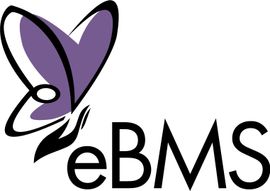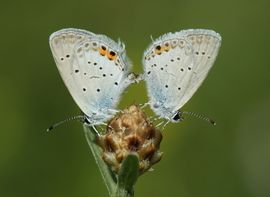eBMS - Butterfly monitoring

One of the most popular and well-known groups of insects are butterflies which can serve as useful bioindicators thanks to their monitoring. Butterflies started to be monitored in Europe in the 1970's and right now butterflies are already one of the best-monitored insect groups in the world, but there are gaps in our knowledge. For that reason, BCE continues promoting butterfly monitoring everywhere.
Projects boosting butterfly monitoring
BCE has been working on several projects to promote and improve butterfly monitoring in Europe. Discover more in the following links:
Why butterflies?

Butterflies are valuable bioindicators of terrestrial ecosystems because they meet a series of requirements:
- They are easy to recognize.
- They are very sensitive to changes (both climatic and actions in their habitats).
- They are a prominent group of insects that collectively make up more than two-thirds of all species on Earth.
- Together with other insects, they are a vital component of the food-chain, providing food for other insects as well as birds and mammals, and the pollination of wildflowers.
What is the eBMS - European Butterfly Monitoring Scheme?

Butterflies in Europe have been counted by Butterfly Monitoring Schemes since 1976. The method consists of counting butterflies along a fixed route called a transect which is visited regularly during the butterfly flight period (the exact period depends on the country). Most transects are counted once per week by volunteer recorders.
There are well organised schemes active in Europe in many countries, from Finland in the north to Spain in the south. The European Butterfly Monitoring Scheme (eBMS) was established by Butterfly Conservation Europe in April 2016 to bring together data from these country schemes into a single database. The work is coordinated by the UK Centre for Ecology and Hydrology and has its own dedicated website.
Butterfly Monitoring Schemes in Europe
Butterfly monitoring is booming. Since the start in the UK in 1976 more and more schemes have joined in. At present the following schemes are active in Europe (click the links for more info):

- Andorra: all species since 2004 (inside CBMS).
- Austria- AUBMS: new scheme in 2019, more than 30 transects.
- Austria (Viel-Falter): all species since 2013.
- Belgium (Flanders): all species since 1991 from 10-20 sites.
- Belgium (Wallonie): all species since 2010.
- Croatia all species since 2020, more than 30 transects.
- Cyprus: new scheme since 2019.
- Bulgaria: new scheme in 2019.
- Czech Republic: monitoring all species since 2014.
- Estonia: all species on ten transects since 2004.
- Finland: all species since 1999 from approximately 100 sites.
- France (Doubs and Dordogne): all species since 2001 from 10 sites.
- France (whole country): all species starting 2006, now approximately 600 sites.
- Germany: in the Pfalz region monitoring data on three habitat directive species (Maculinea teleius, M. nausithous and Lycaena dispar) is available since 1989 from almost a hundred sites.
- Germany: Nordrhein-Westfalen all species since 2001. From 2005 data from over 100 sites available.
- Germany: In 2005 a nationwide monitoring scheme was launched, now 100 of sites.
- Hungary: all species since 2016 with more than 30 transects.
- Ireland: all species since 2007, more than 160 sites.
- Italy: all species since 2019, more than 100 transects.
- Jersey (Channel Islands): all species since 2004 from 25 sites.
- Latvia: all species since 2015.
- Lithuania scheme restarted in 2021, with some transects from 2009.
- Luxembourg: all species since 2010, more than 80 transects.
- Malta: all species since 2020.
- Norway: all species since 2009 (including bumblebees).
- Poland: all species since 2020.
- Portugal: new scheme in 2019, more than 40 transects.
- Slovenia: all species since 2007.
- Spain (Catalunya): all species since 1994 from 159 sites.
- Spain (Basque Country): all species since 2010.
- Spain (except Catalunya and the Basque country): registering all species since 2014, more than 200 sites.
- Sweden: all species since 2009, more than 100 sites.
- Switzerland (Aargau): all species since 1998 from over 100 sites.
- Switzerland: Also in the rest of the country butterfly monitoring data is collected since 2000, on at least 100 sites annually.
- The Netherlands: all species since 1990 on >1000 sites.
- Transcarpathia (Ukraine): field data collected for all species at 20-30 sites since 1983, but at present only analysed for one species (Erynnis tages).
- United Kingdom: all species since 1976, annually from >3000 sites.
- Turkey: all species since 2022.
Butterfly Indicators
You can see all the indicators produced with the butterfly monitoring data:
